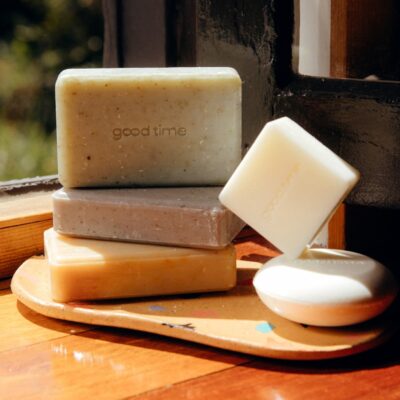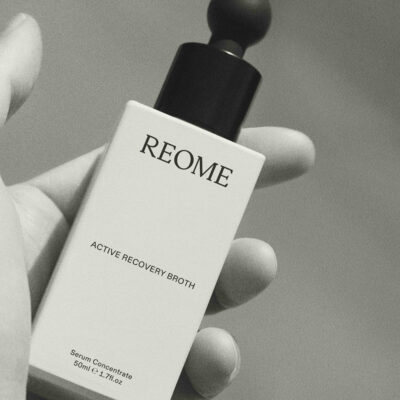
The Skincare Boom May Be Over. Where Should Skincare Brands Go From Here?
Even though Kim Kardashian is banking on skincare with the upcoming launch of her new brand SKKN, the skincare category isn’t where much of the action is taking place today in the beauty industry.
As Larissa Jensen, VP and beauty industry advisor for market research firm The NPD Group, explained to the publication Beauty Packaging, the industry typically cycles between makeup or skincare being the dominant category every four to five years. Skincare reigned starting in 2017. Now, makeup is making its predictable push.
Last year, according to NPD, skincare was the softest prestige beauty category in the United States. Still, it grew about 18% to around $6.3 billion. In the first quarter, prestige skincare sales were up 11% to $1.6 billion. In contrast, prestige makeup sales soared 22% to $1.8 billion.
Against the backdrop of skincare tepidness, we asked nine beauty industry experts the following questions: What do you think is going on with the skincare category? In light of what you think is happening, what do you advise skincare brands do? What risks and opportunities do you see for them?
- Robin Albin Founder, Insurgents
For as long as I’ve been in the beauty biz, which I confess is a long time, the pendulum has swung back and forth from skincare to color and back again. This post-pandemic swing is prompted by two concurrent trends.
Too many skincare brands with colliding and confusing claims, especially around “clean,” have created a bit of a beauty blur and care fatigue. And as we venture out of our Zoom-room cocoon with masks off, there’s an increasing desire to for some radical and creative self-expression and, dare I say, fun.
I’m intrigued by beauty products that merge imagination with innovation such as highly pigmented color cosmetics and creative application techniques supercharged with high-performance ingredients that are protective, active and climate-resilient to help skin adapt to extreme environments. Why not have it all!
- Keyanna Sawyer-Jones CEO, Bleum Creative
The skincare industry has been in overdrive for the last couple of years, but signs are in fact pointing to a slowdown ahead. However, this doesn’t mean that skincare itself is cooling off, it just means that perhaps customers are getting tired of the hype and brands should be more thoughtful about providing more value and pricing.
Prices for premium skincare are on the rise. Customers with tighter budgets have chosen less expensive alternatives or to use a single product that is more effective at solving a specific skin issue like brighteners, exfoliators, and blemish treatments rather than splurge on an entire skincare regimen.
With so many consumers looking for more value from their skincare purchases, I think we'll see major growth in brands launching single, targeted products or creating lines or category extensions at more economical price points. For example, Sharon Chuter of Uoma Beauty did this for Walmart.
Furthermore, skincare has become a commodity category where consumers no longer make decisions about brands based on just performance. They also make their decision about what skincare to buy based on how the brand appears to them or how it makes them feel.
In order for brands to differentiate themselves during this slowdown period, think about how your brand can give customers more than they get in a standard transaction. Create memorable moments to connect, whether it’s through experiential or influencer marketing initiatives which develop brand loyalty.
- Alyse Zunino Founder, Eminence Brand Development
The skincare category is an extremely competitive landscape and a convoluted one. Skincare brands are starting to look alike, sound alike, and there's little to no point of difference, and they are starting to lack a definitive unique selling proposition (USP).
Retailers and ultimately the consumers are not looking for another vitamin C serum or hyaluronic acid serum or a combo of them, but something uniquely different. It's a challenging space.
In light of what I have been experiencing, skincare brands need to focus more on innovation in the hyper-personalization, wellness and at-home treatment categories. Brands also need to have a strong authentic USP, backing it through all their marketing initiatives, and be willing to get aggressive and scrappy. Be more creative, think outside the box, amplify all your initiatives and get uncomfortable.
They also need to be mindful of future marketing technologies evolving from Web3 and the emergence of NFT's. Being open to evolving your brand and not standing still is key with this fast, ever-changing landscape.
- Kristy Engels Founder, HTH Consulting
After two years of complicated living, consumers have shown they are ready for a return to simplicity. We've seen new brand launches from The Outset, Humanrace and Dore that embrace the skinimalism trend with pared-down products for an easy routine.
Customers are still performance- and ingredient-driven, seeking out what works and shunning what doesn't. Savvy consumers aren't looking to the traditional beauty influencers for guidance with skincare and have given rise to the TikTok dermatologists who are providing more credible, science-backed insights while debunking myths.
Brands need to make sure that every product they launch has a real reason for being for their customers. The risk for some of the simplified DTC brands is the continued rise of customer acquisition costs. Some brands have come under pressure to add more products into their assortment to drive basket dollars, others have gone into retail to offset these costs.
As more of the simple celeb skincare brands take up retail shelf space, many of the buzzy DTC indie brands might not get the chance. Opportunity exists in adopting a "drop" strategy with limited availability that allows a brand to drive consumer excitement on social and build buzz while testing the market for the product's ability to live long-term in its portfolio.
- Kelly St. John Founder, KSJ Collective
The skincare category has enjoyed amazing growth for the past many years. The sheer number of new brands in this category in the last 12 to 18 months is staggering. For this reason, it is even more critical that brands have diligently worked on their brand positioning, understand their why, and they should be laser focused about the white space they fill for each potential retail partner.
The must-haves that a brand needs to ensure they have to ensure the highest level of success are formula integrity, efficacious product, amazing packaging, a strong and relatable founder story, a commitment to sustainability, etc. Along with clean ingredients being table stakes for brands, clinical studies as well as before-and-after images are becoming more and more important to buyers and consumers.
- Katie Klencheski Founder and Creative Director, SMAKK
While the pace of new entrants coming to market is slowing, skincare has had more brands come to market in the past few years than ever before. The sea of brands is huge, and it has made differentiation hard. Brands that have already launched have to find unique stories to tell at the brand and product level to carve out space and channels to reach consumers.
Clean is no longer enough. Sustainable is no longer enough. Being affiliated with a cause is no longer enough. Cute packaging is no longer enough. One differentiator is not enough. In fact, all of the above have become table stakes. We’re seeing successful brands say “yes and” to all of that while embracing cross-category, often wellness-aligned brand stories, i.e., skincare plus sexual wellness, spirituality, functional medicine, mental health and more.
The lift to reach consumers with marketing and brand awareness is harder than ever. Social ads are becoming more costly and celeb-backed brands are everywhere. Consumers are hip to the fact that a skincare product rarely delivers the breathlessly promised results influencers and TikTok “experts” tout. It’s time to throw out the DTC playbook that’s been played out for the past five years and find new, less crowded channels to reach consumers.
And now that the market is cooling, and supply chain and funding have slowed, we’re also starting to see conventional brands finding their footing again. After years of challenger brand after challenger brand rapidly coming to market with new ideas, the industry is seeing what spaghetti is sticking to the walls.
Multinational brands have been paying attention to the disruptors in DTC space, and they’ve been developing products and marketing strategies straight from that playbook. Expect to see more of the household name brands behaving like DTC brands, while the next wave of disruptive brands taking much bigger risks.
- Catherine Collins Founder, Constellar Consultancy
I think we've seen a major surge in the growth of brands as it became easier for a founder to build their own website and launch online along with other critical pain points being eased such as manufacturers willing to do smaller runs. So, a plethora of things have appeared to make the route to market seem easier than before.
In reality, however, it may be easy to create a brand, but to grow and sustain one that stands out is a different story. I think that has contributed to the slowing of this category. Unless the brand is properly funded and can afford the increasingly expensive omnichannel rollout, they’ll need to start with sustainable local and organic growth built around their core values.
There were many skincare launches that I think have now fizzled out because the brand failed to build upon strong foundations that led to decisions being made that confused their target consumers and made buyers reluctant.
Another point is that focus has shifted slightly as hair care and body care are booming. They aren’t as saturated and ultimately consumers are demanding more options in these categories as our skin is much more than just our face. So, there has been a bit of a change of direction for many brand founders. For some brands, this makes sense, but for others it’s a step away from their core values and consumers can sense that.
There has also been a general shift as consumers are reluctant to spend on skincare that doesn't have actual benefits. The so-called skin minimalism category has grown both online and offline, so this type of skincare has really taken over. I personally don't see this changing anytime soon and brands that can create effective formulations that deliver results, but also bring wellness into a skincare regimen are likely to thrive. Essentially, brands should be proactively investing in a consumers’ overall wellness so it's not only what it does, but how it makes their customer feel.
Customers are searching more and more for benefits and claims online. One area of opportunity that we are beginning to see a rise in is neurocosmetics, how the brain responds to the application of certain ingredients. It isn't a new science, but we are seeing more brands choose specific ingredients for their ability to assist with skin aging, skin barrier improvement and overall lowering of stress hormones such as cortisol. It still has a long way to go, but there is more and more science behind it.
Clean skincare also isn't going anywhere, but I think founders have to be aware that clean isn't enough [and] also what those standards really are when it comes to their formulations. In order to thrive, fear-based marketing isn't going to help, instead connect with your consumers and be real about your sustainability journeys, your ingredient story, results, supply chain, etc., is key.
People still invest in people, so it's more about the consumer being part of that journey with you as they will ultimately move towards brands which are truly transparent, effective and doing something for the collective.
- Vicky Colangelo Beauty and Wellness Industry Consultant, Nxt Beauty
The cool-off may be attributed to industry cycles as well as the oversaturation of skincare brands. What's clear is that innovation is needed in formula, active ingredients, formats and packaging in order for brands to differentiate themselves. There are many opportunities available such as new ingredients utilizing biotechnology, the concept of providing real efficacy testing and, of course, beauty tech and devices.
What excites me the most is seeing innovation in categories that are commonly more "commoditized" or "boring.” An example can be oral care with Lush’s new format mouthwash "tabs" and "nibble" toothpaste, and Colgate’s elixir toothpaste providing a luxury user experience and sustainable approach to the category.
Another area of opportunity is the convergence of beauty and wellness, which opens up to a more holistic view of skincare. How well you sleep, breathe and eat all impacts how we look. Brands that break the rules of traditional categories and blend outer and inner beauty have a competitive advantage, being more interconnected to the consumer for a multidimensional or lifestyle approach. Let's face it, we use beauty products to look healthier!
- Jillian Wright VP of Business Strategy, Willow Beauties, Aesthetician, Jillian Wright Facials, and Co-Founder, Indie Beauty Media Group
The skincare market is currently oversaturated, and retailers are looking for differentiation. You have to be able to tell your story in a convincing way that separates your brand from the competition.
I've always said to brands, "Look in the mirror and ask yourself, ‘Why my brand?’" If you can answer it in a convincing way, then you have a chance. Right now, retailers are looking beyond skincare and are more interested in below-the-neck body care. This is where brands have a chance to get themselves in the right doors.
Even if you have a proprietary formulation, you need to be able to tell your story in a compelling way. Not only that, but it has to make sense for the end user, the consumer. Passion isn't enough anymore. No one cares.
With the price-conscious consumer, people want to spend their money in ways that will benefit them. Brands need to think beyond their story and how their products fit within the lifestyle of today's consumer. In addition to that, your brand needs to be pushed by ambassadors, whether that is someone behind the counter or a content creator. The brand needs to make sense so they can share your mission. Always ask yourself, "Who cares?"
If you have a question you’d like Beauty Independent to ask beauty entrepreneurs, executives, consultants and other experts, please send it to editor@beautyindependent.com.






Leave a Reply
You must be logged in to post a comment.